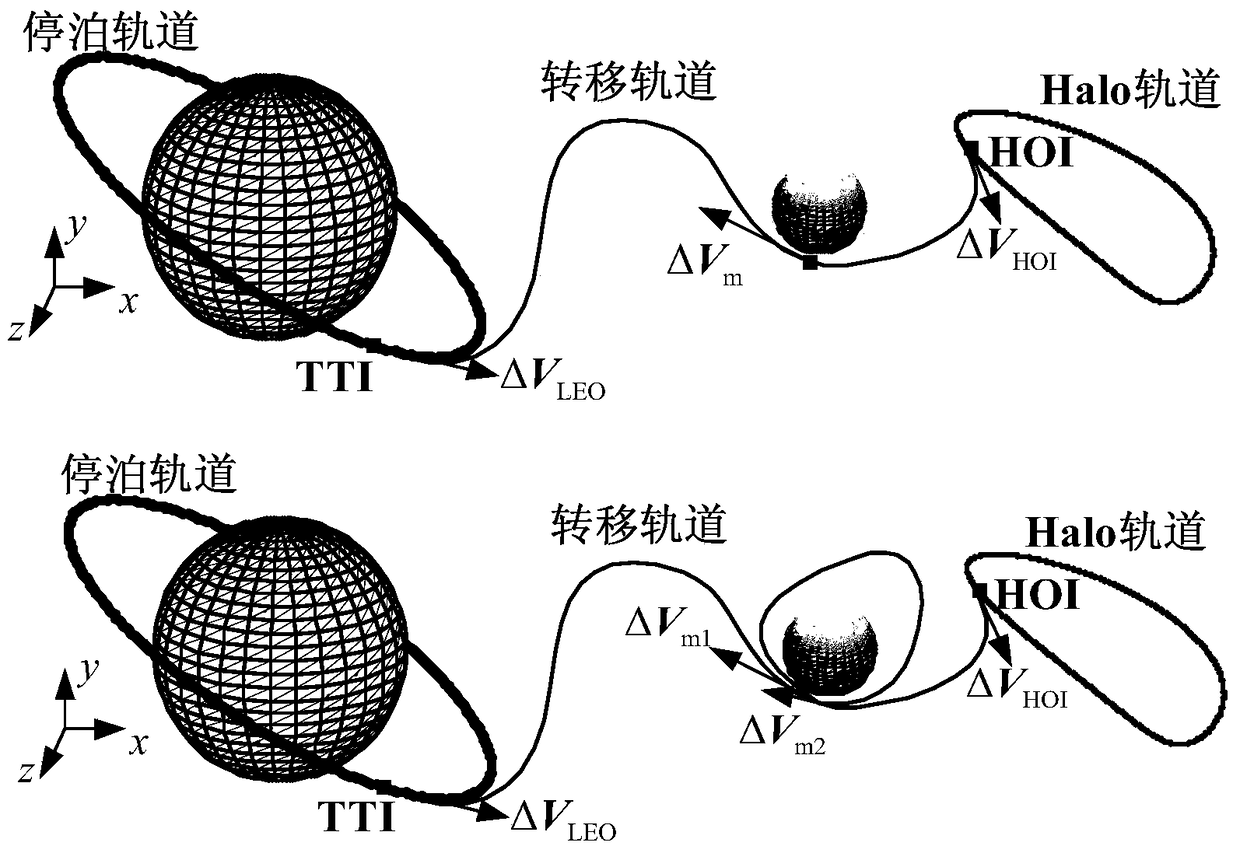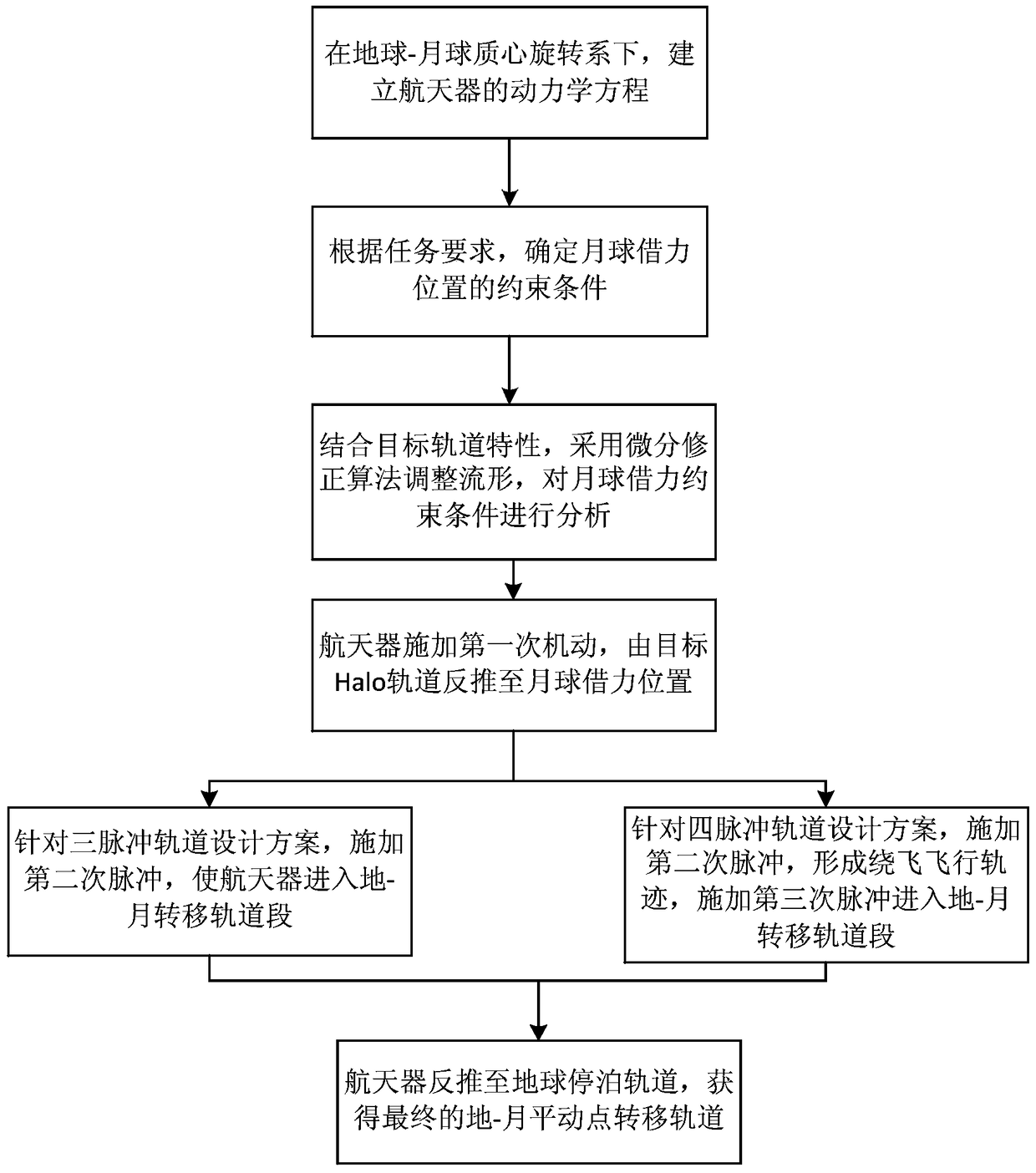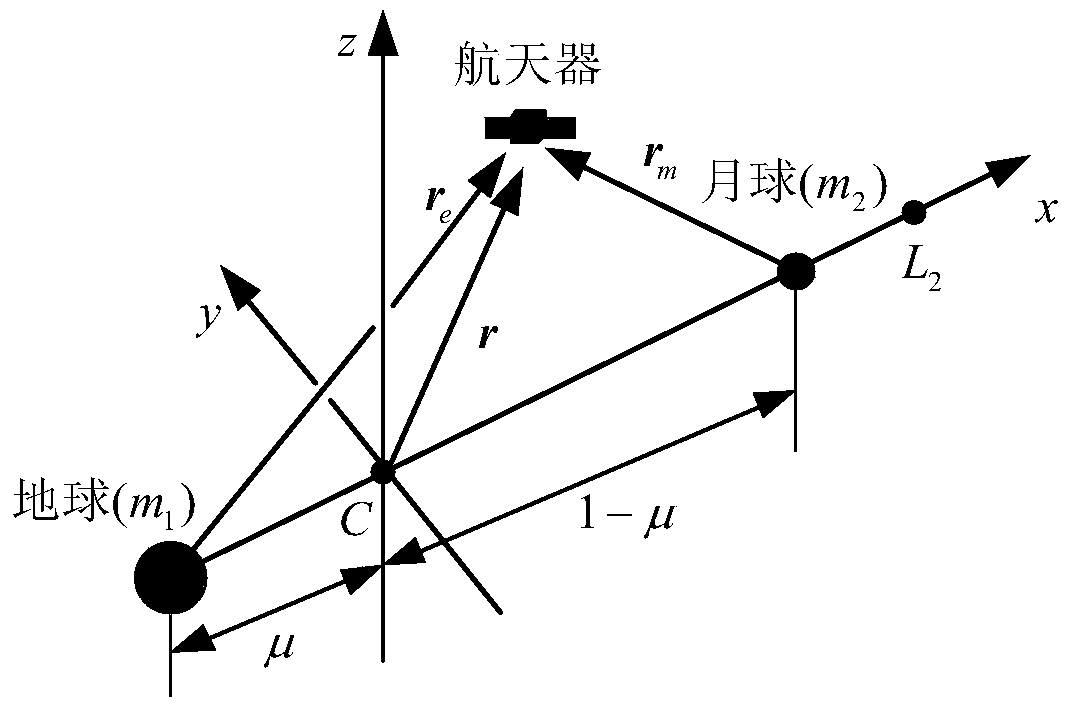A Design Method of the Earth-Moon Translational Point Transfer Orbit Constrained by the Moon's Borrowing Force
A technology of transfer orbit and design method, applied in calculation, instrument, geometric CAD, etc., which can solve the limited ability to reduce fuel consumption, weak stable boundary and invariant manifold transfer strategy, and no choice of Halo orbit entry point Strategically solve problems such as moon leverage constraints to achieve small speed increments and reduce fuel consumption
- Summary
- Abstract
- Description
- Claims
- Application Information
AI Technical Summary
Problems solved by technology
Method used
Image
Examples
Embodiment 1
[0044] Such as figure 1 , figure 2 As shown, for the three-pulse design scheme, a method for designing the transfer orbit of the Earth-Moon translation point constrained by the force of the Moon includes the following steps:
[0045] Step 1. The spacecraft applies the first pulse, and the target Halo orbit is reversed to the position of the lunar leverage point. The constraints of the lunar leverage point are as follows: Figure 4 shown;
[0046] Select the Halo orbit with normal amplitude Az=10000km as the target orbit, and the expected lunar borrowing constraints satisfy: near-moon height flight path angle Borrowing azimuth Select the state of the Halo orbit entry point as [1.12507,-0.08292,-0.00461,-0.03415,0.06426,-0.04819] T , using the formula (1) to integrate the state quantity of the Halo orbit entry point, in the position satisfying the track angle constraint, the height from the closest point to the moon is h m =1.3978×10 4 km, leverage azimuth δ m = 16.4...
Embodiment 2
[0054] Such as figure 1 , figure 2 As shown, for the four-pulse design scheme around the moon, a method for designing the transfer orbit of the earth-moon translation point constrained by the force of the moon includes the following steps:
[0055] Step 1. The spacecraft applies the first pulse, and is reversed from the target Halo orbit to the moon’s borrowing position. The moon’s borrowing point is constrained as follows: Figure 4 shown;
[0056] Select the Halo orbit with normal amplitude Az=5000km as the target orbit, and the expected lunar leverage constraints are satisfied: near-moon height flight path angle Borrowing azimuth Select the state of the Halo orbit entry point as [1.12135,-0.05816,-0.00740,-0.01368,0.12341,-0.00535] T , using the formula (1) to integrate the state quantity of the Halo orbit entry point, in the position satisfying the track angle constraint, the height from the closest point to the moon is h m =2.18664×10 4 km, leverage azimuth δ ...
PUM
 Login to View More
Login to View More Abstract
Description
Claims
Application Information
 Login to View More
Login to View More - R&D
- Intellectual Property
- Life Sciences
- Materials
- Tech Scout
- Unparalleled Data Quality
- Higher Quality Content
- 60% Fewer Hallucinations
Browse by: Latest US Patents, China's latest patents, Technical Efficacy Thesaurus, Application Domain, Technology Topic, Popular Technical Reports.
© 2025 PatSnap. All rights reserved.Legal|Privacy policy|Modern Slavery Act Transparency Statement|Sitemap|About US| Contact US: help@patsnap.com



